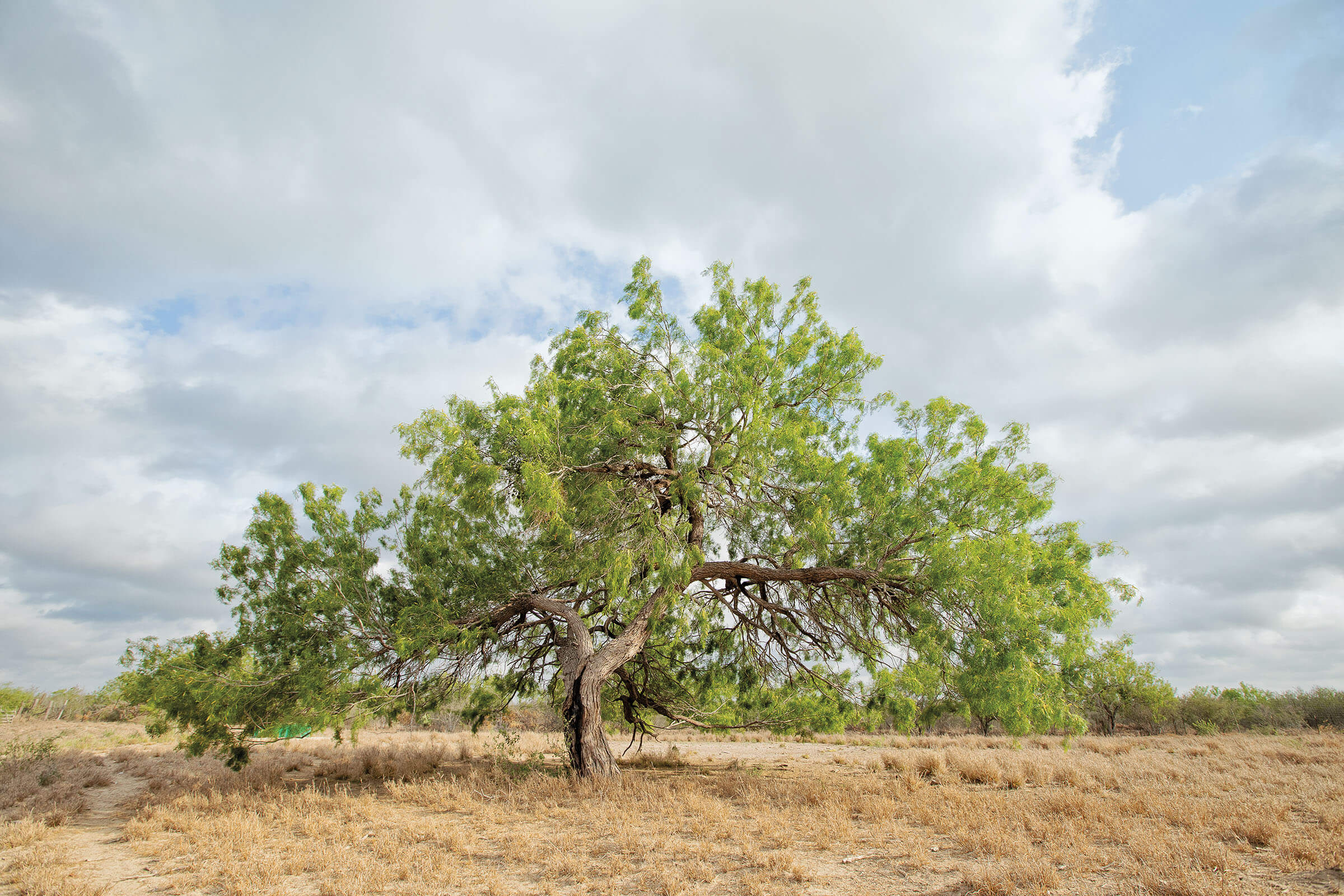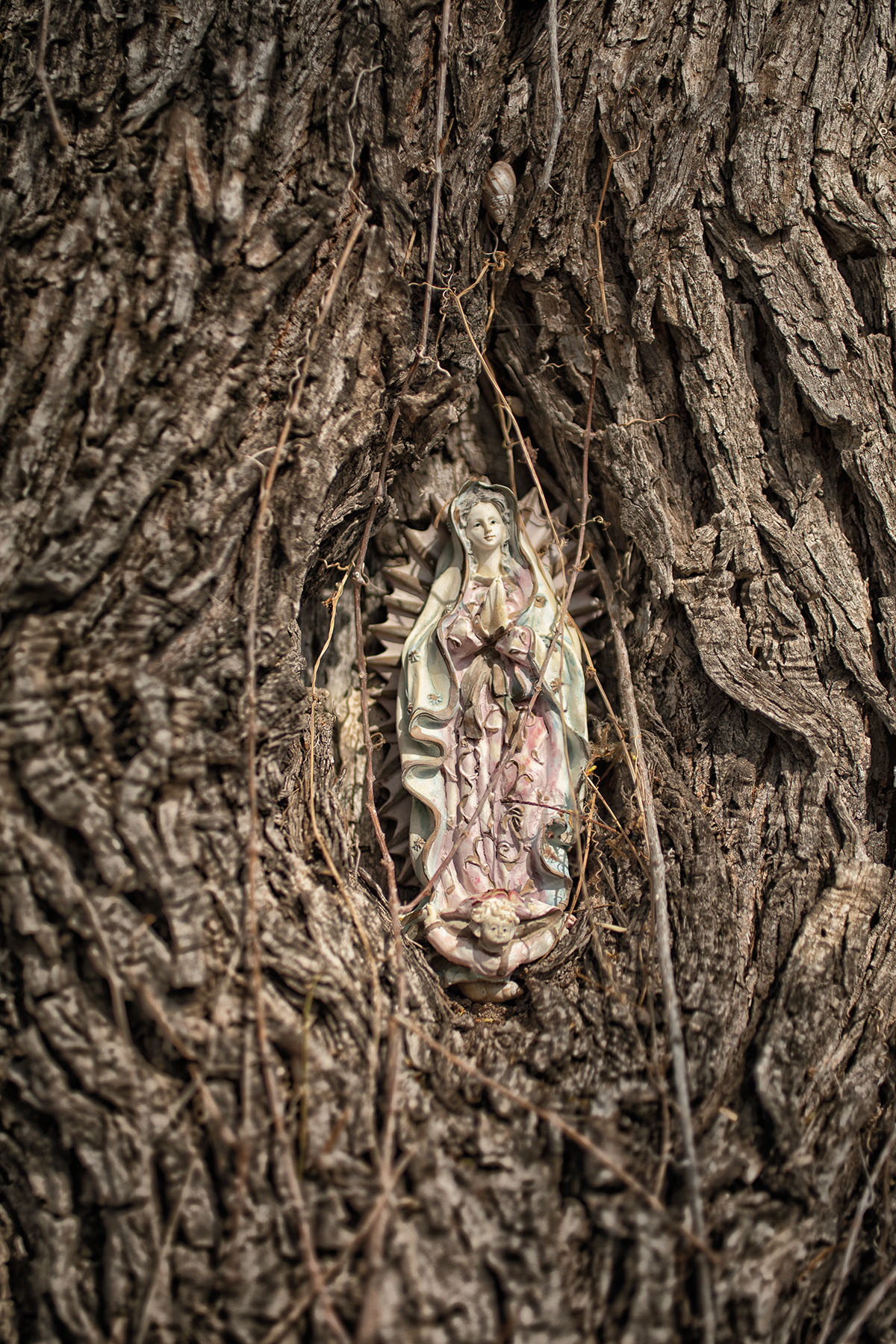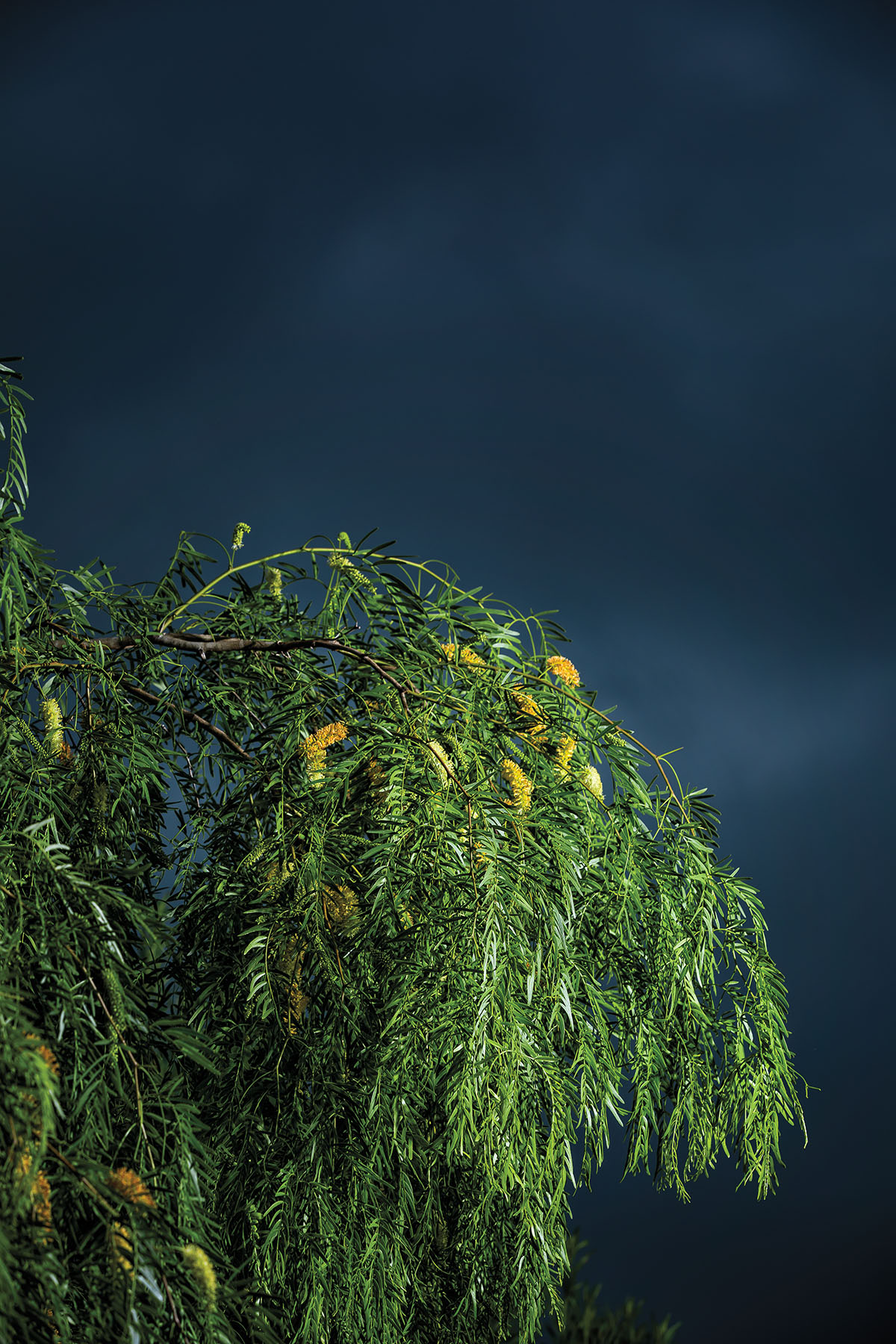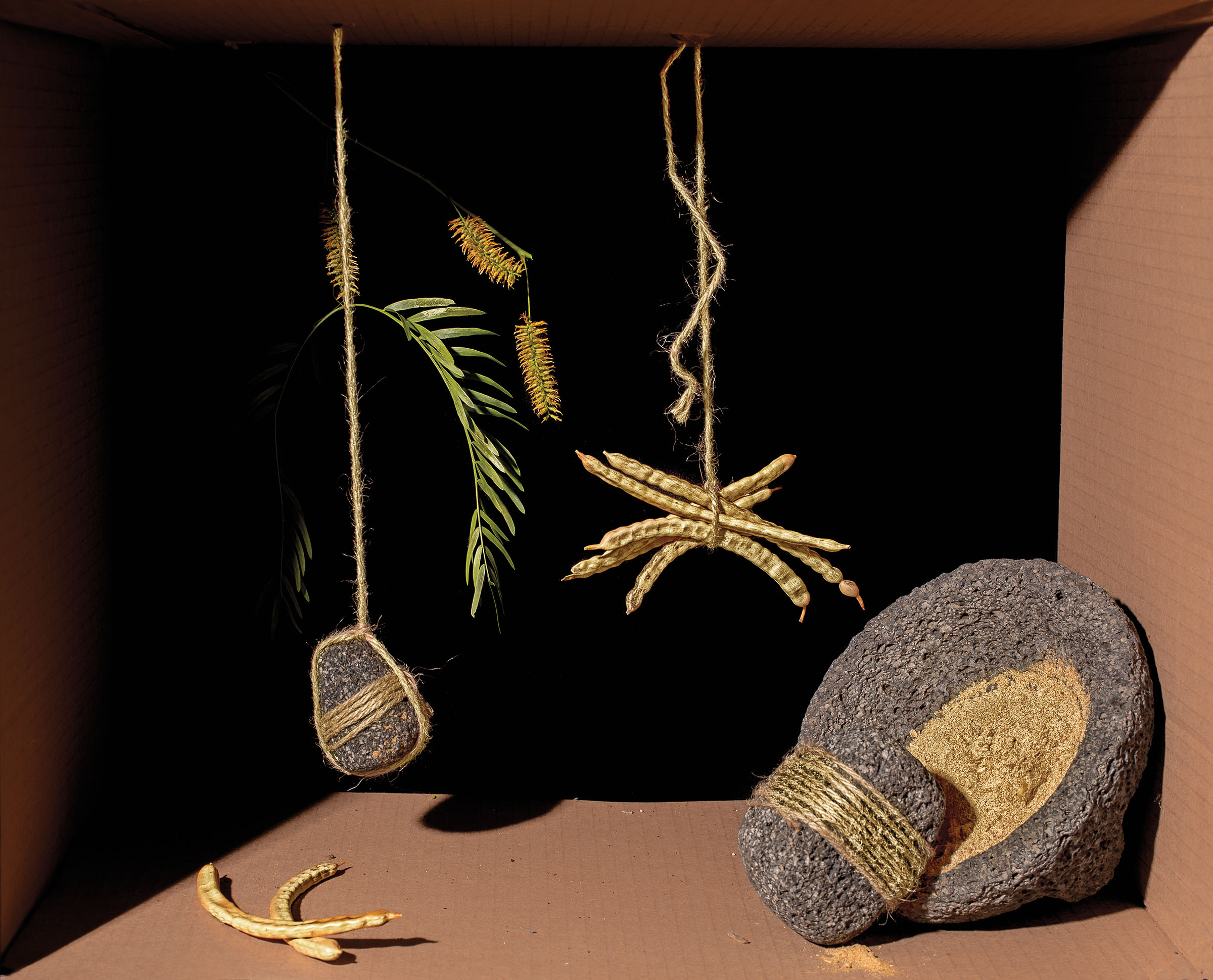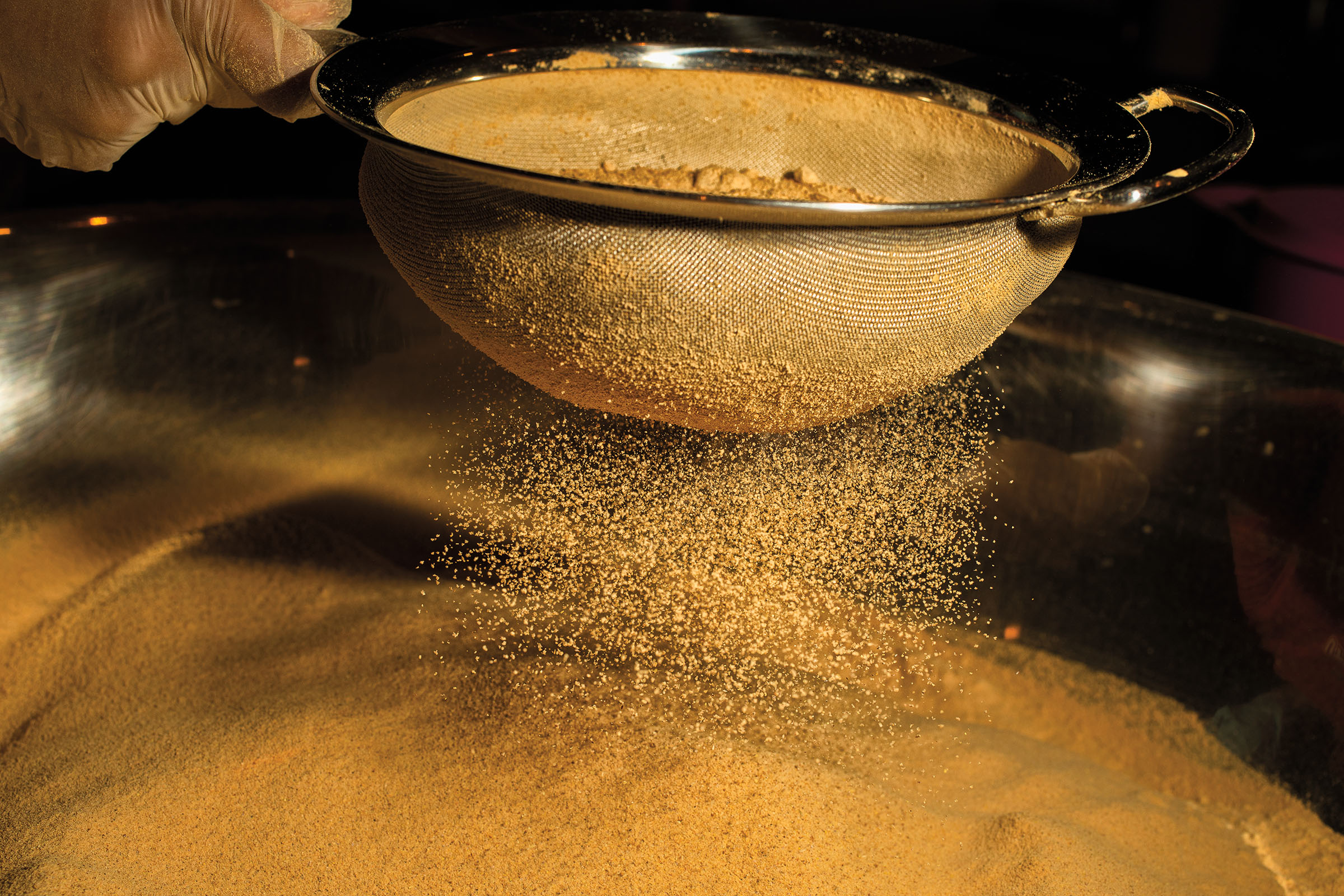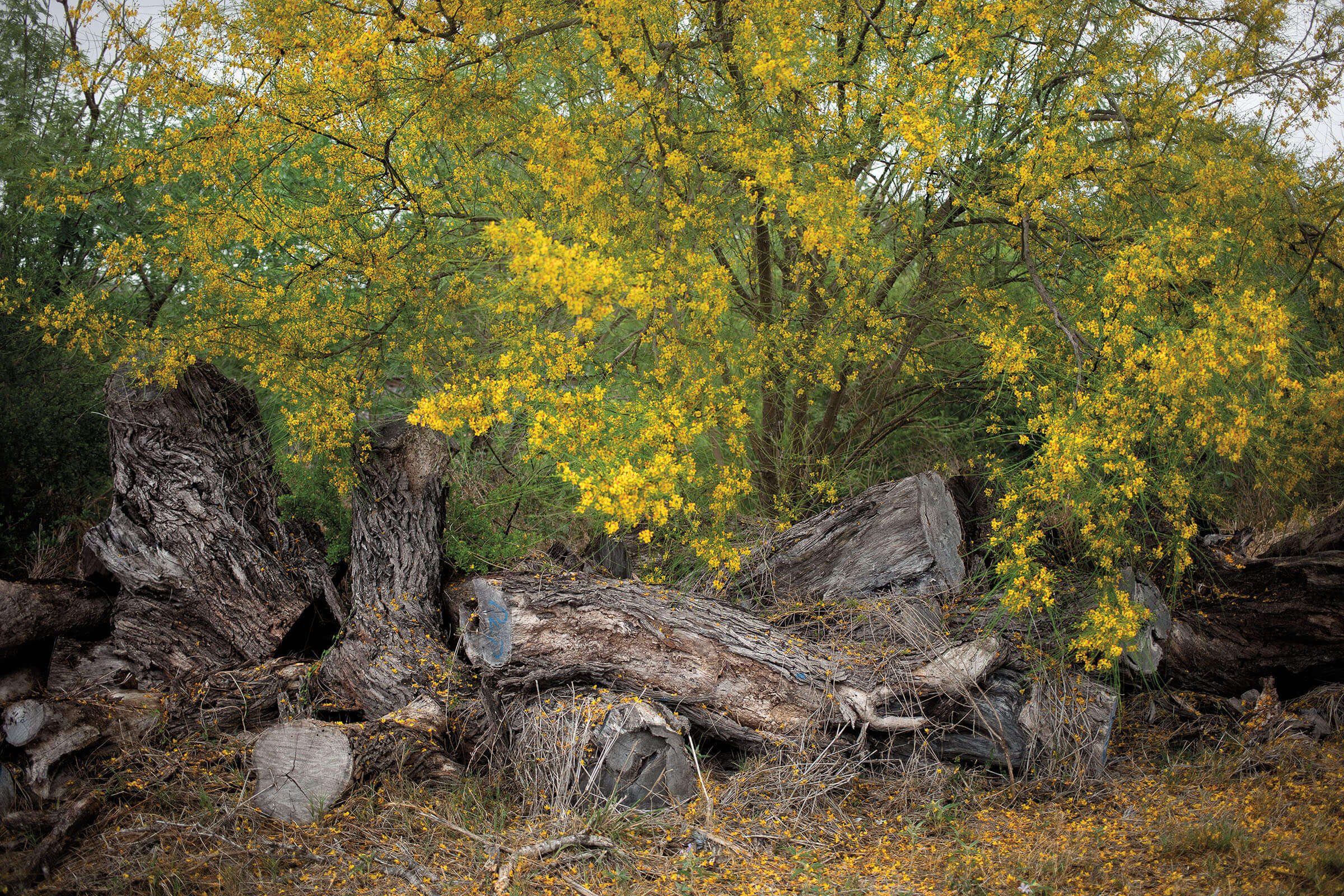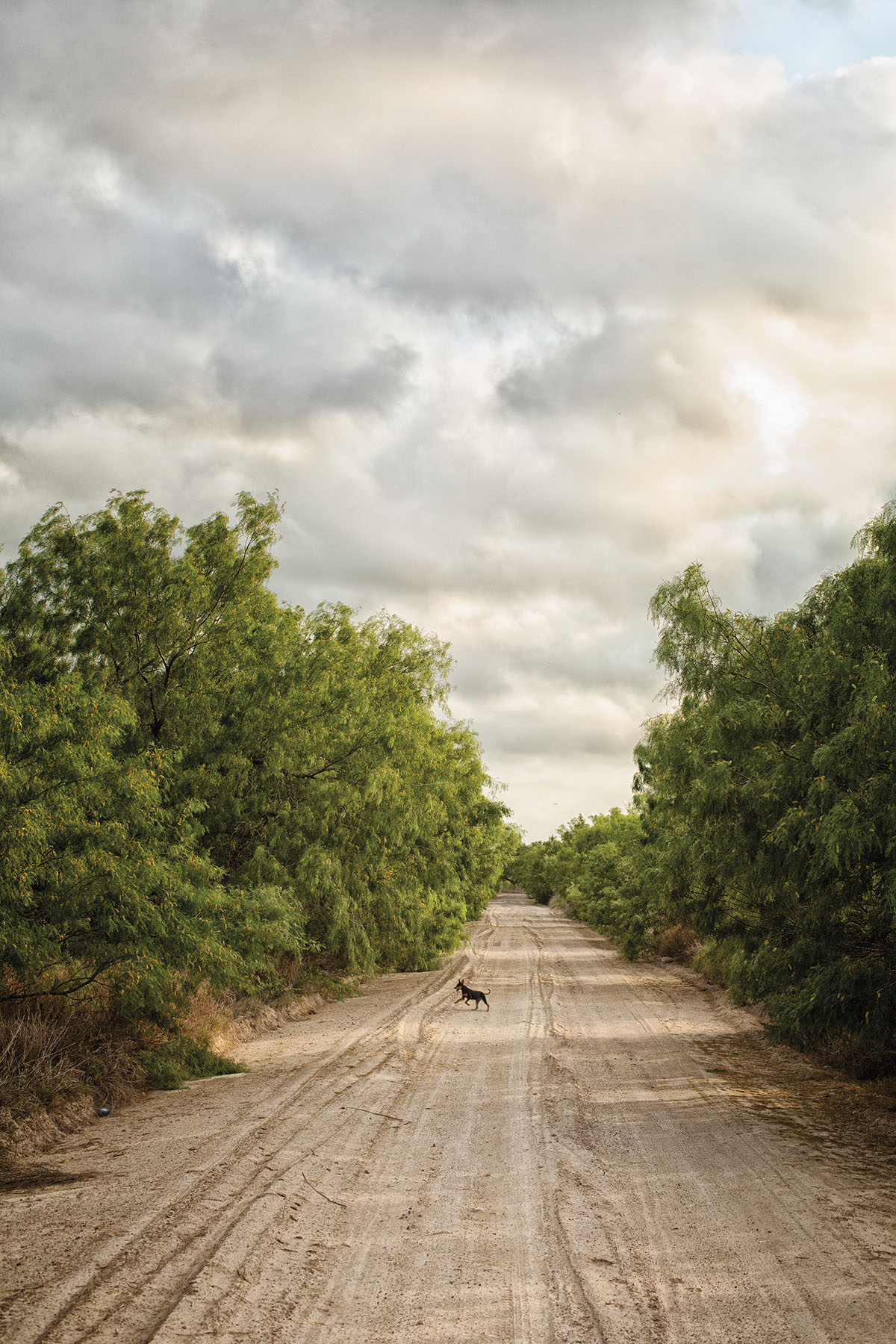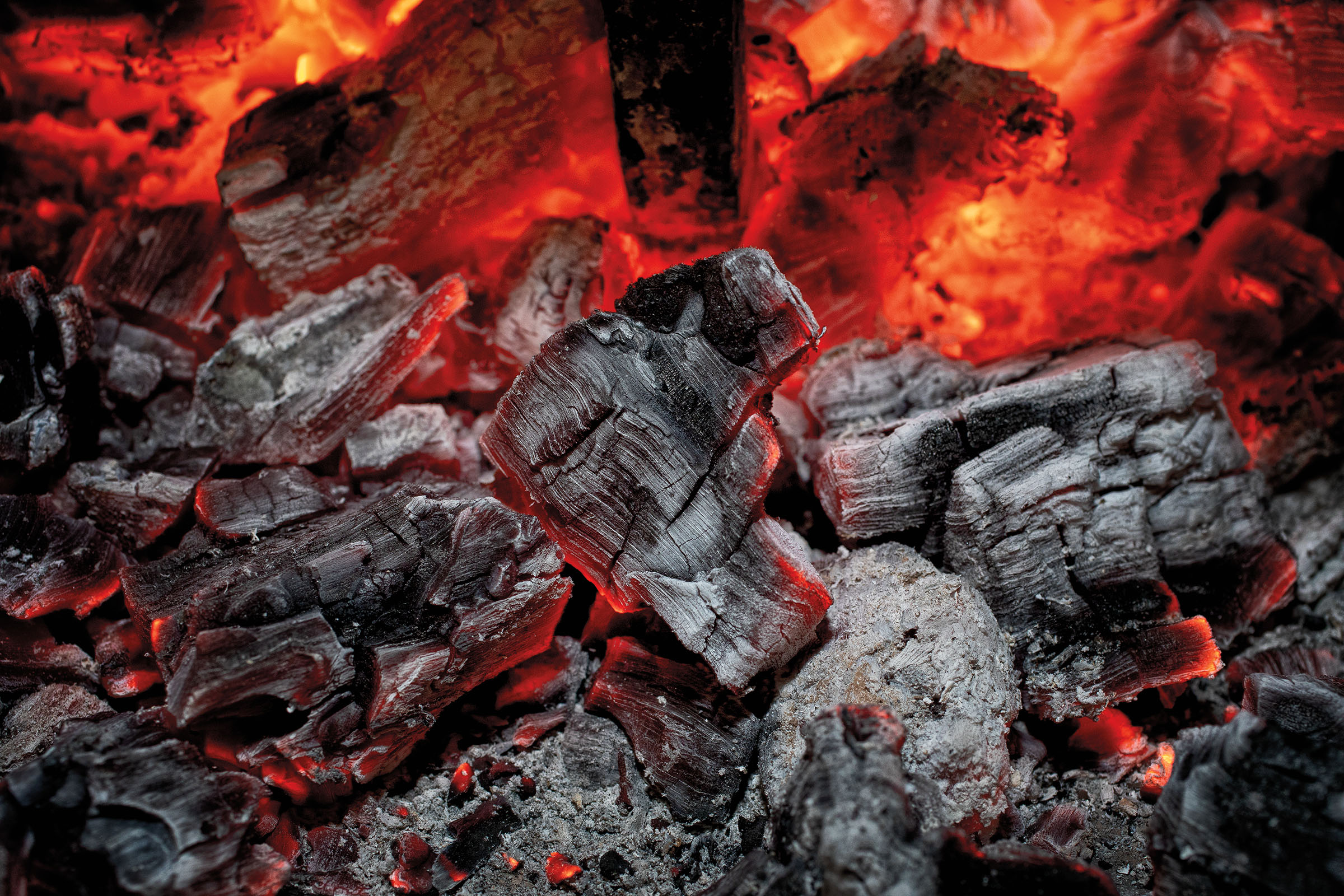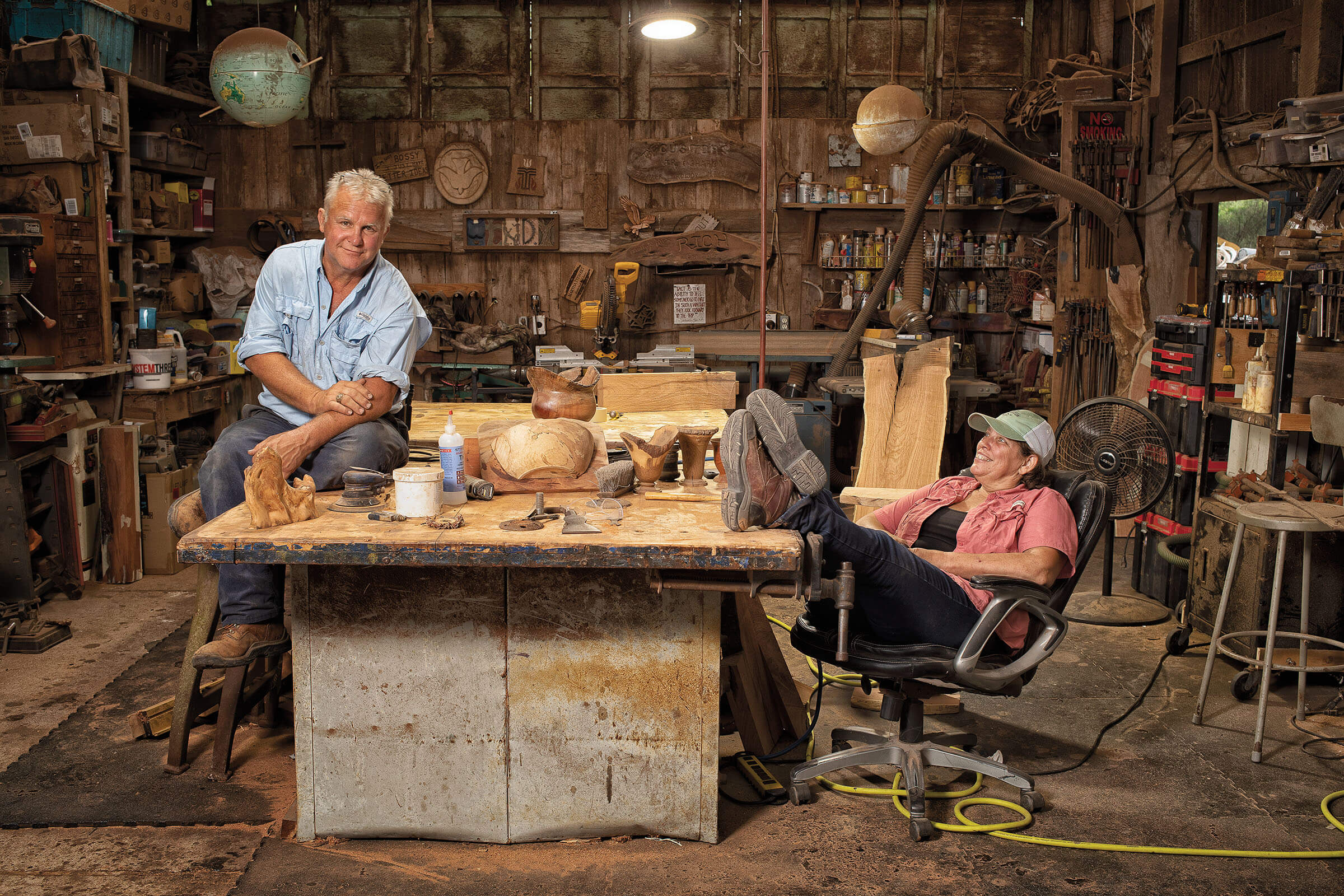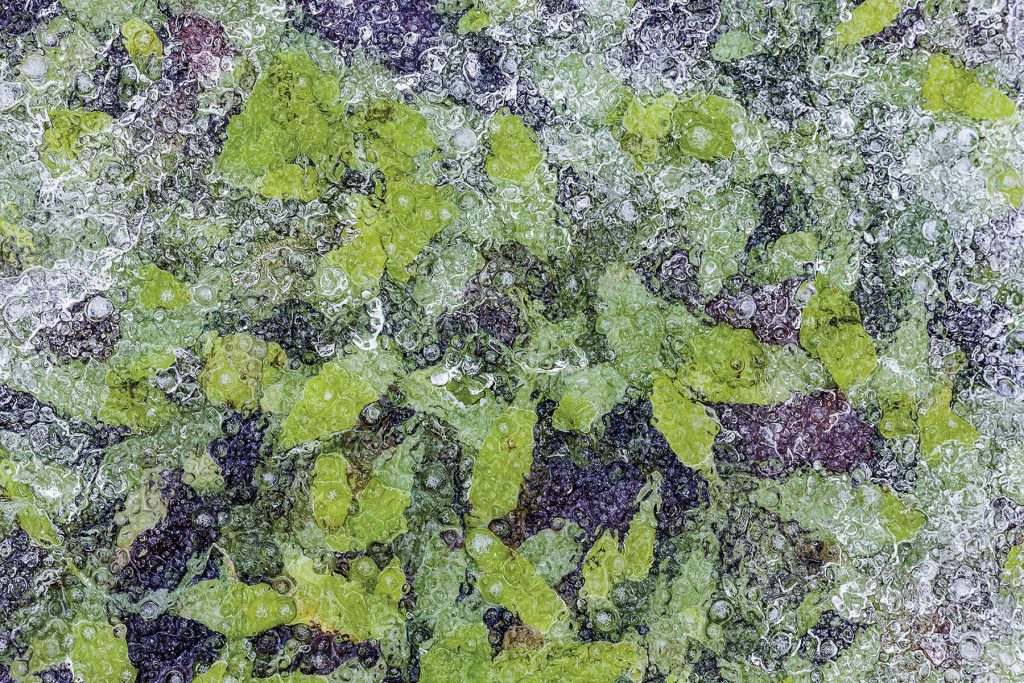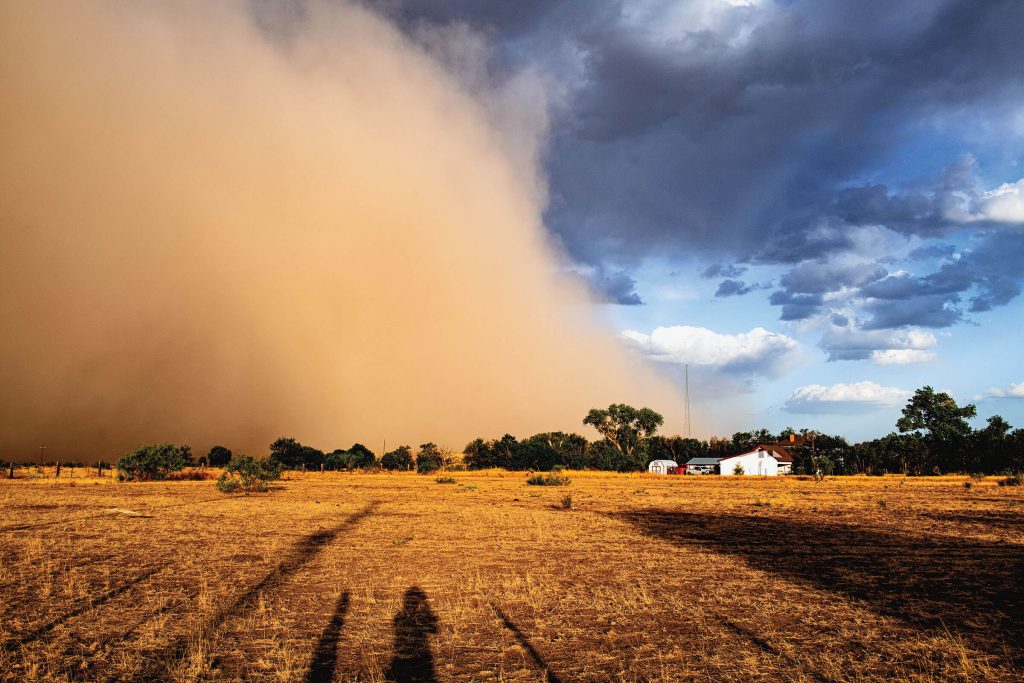The Tree Of Life
On the mesquite trail in South Texas
Photographs by Joel Salcido
Leer en españolApproximately 75% of the mesquites that grow in the United States, like this one near Rio Grande City, are in Texas. Indigenous peoples used every part of the tree—leaves, bean pods, bark, trunk, limbs, gum, and roots.
Devil trees. Trash trees. Farmers and ranchers, and gardeners and landscapers alike have often cursed mesquite trees ever since non-Indigenous peoples arrived in what is now Texas. Mesquites will grow nearly everywhere and anywhere. They don’t need much water or any coddling. Just plentiful sun. The seedlings are perniciously difficult to uproot. Mesquites rarely grow straight and tall. They’re often built wide and low to the ground, their wayward branches revealing the truth of the wind. Their leaves are spindly, not big and wide, resulting in little shade. They’ll drip dark sap on your vehicles and your picnic tables, and their pale bean pods will overwhelm the ground. You’ll try to trim the branches and end up leaving thorns red-tipped with your blood. You’ll clear an area of mesquites, but they’ll keep returning year after year, rising up as if by magic.
But, can I tell you if you love the mesquite, it will love you back? In a life full of challenges, what is a greater symbol of tenacity and persistence than a mesquite? I’ve seen trunks leaning at almost 45 degrees, carved by relentless wind but still reaching for the sun. I’ve seen mesquites towering high, the grooves in their bark as deep as the lines in the face of a beloved elder, deep as the ravines in a careworn heart. A mesquite survives—lightning, hurricanes, fires. Mesquites never give up. And at night, the branches sway and sway, sharing more of the moon than any other tree.
As children in South Texas, we didn’t climb them, but we took refuge in their spare shade. Were fascinated by the tiny flowers. Collected the bean pods for our games of pretend. Touched our fingertips to the sap to taste it. Hunted for the sight of the almost perfectly camouflaged caterpillars that would become black moths. My childhood home in Edinburg was miles outside of town. A couple acres away, a thin strip of mesquites marked the division between one farmer’s property and another’s. At night, coyotes ran along that strip, and we’d hear them howling the most beautiful sound, the most wild and tender lullaby.
Intrigued by stories of businesses that trade in mesquite, Texas Highways contributing photographer Joel Salcido set out to capture the essence of the tree. “On any given lazy summer Sunday,” Salcido reminisces, “my Tío Chico would drag some of us kids into the Chihuahuan Desert beyond the city limits of my birth town of Ciudad Juárez, not only for the joy of exploring nature but to pick mesquite pods and succumb to their sweetness.”
While mesquites thrive all over Texas, Salcido chose to focus on South Texas, where the elevated temperatures prove no obstacle to their growth. His first stop was at Hands On Sawmill in Kingsville, operated by Wendy and Gene Williams. The couple repurposes mesquite wood that would otherwise end up in landfills. They custom build heirloom items, from bedroom furniture, tables, and benches to signs, crosses, gifts, and kitchen items. After more than 30 years of working with mesquite, Wendy says one of her favorite pieces was a king-size bed they made for a ranch house. “The wife said she wanted it to be grandiose,” says Wendy, whose works are viewable at handsonsawmill.com. “So, we did grandiose!”
Salcido next ventured to Cappadona Ranch in Linn, near McAllen and Edinburg. There, Victoria Barrera Cappadona manages a family operation that makes staples using the mesquite bean. This includes mesquite flour, naturally caffeine-free coffee, tea derived from the Cahuilla tribe, and jelly with chili pequin. The ranch’s website, cappadonaranch.com, highlights several recipes made with their products, including mesquite chicken drumettes and Cappadona Ranch mesquite bean apple brie crostini.
In Starr County, north of Rio Grande City, Salcido made his final stop at Rancho Lomitas Native Plant Nursery, where he visited with owner and manager Benito Treviño. The nursery has provided almost 200,000 native plant seedlings for habitat restoration at nature sanctuaries and on private lands throughout South Texas. “Most of my customers looking for mesquites might want 400, 500, or a thousand tree seedlings,” Treviño says. “These are people who probably have a large ranch or a bunch of acreage, and now they want to restore the natural habitat, sometimes for future hunting—especially for deer, quail, or turkey.” Treviño also offers guided tours, October through May, that teach about the many uses of the area’s native plants, via rancholomitas.com.
Perhaps the time has come again to appreciate what some Indigenous peoples called “the tree of life” for all its gifts. “The idea of being on a mesquite trail didn’t occur to me until I was on the road,” Salcido confides. “I suddenly realized I was on a journey that explored the multiple uses of mesquite in modern times. I deliberately focused on the people behind the scenes, each committed, in one form or another, to a way of life based on this resilient tree.”
—ire’ne lara silva
“Driving south on Old Charco Blanco Road toward Rio Grande City, I slammed the brakes when I saw this mesquite,” photographer Joel Salcido says of a tree that had become a descanso, or memorial. “I was mesmerized by the beauty of the Virgen de Guadalupe encrusted into the bark.”
“Mesquite trees are a very dependable crop,” says Benito Treviño of Rancho Lomitas Native Plant Nursery in Starr County. “They’re kind of strange because if it’s a nice rainy year—which is not very often here—they spend a lot of their energy growing. But in years of drought, they produce very heavy crops.”
“Growing up, I used to love riding on a swing at night close to a trio of wide old mesquites,” says ire’ne lara silva, reflecting on this mesquite in bloom at Cappadona Ranch in Linn. “This was the only time I’d hear my mother scolding me to come inside, before the lechuzas—the shape-shifting witches turned owls—carried me away!”
“I wanted to see if I could translate the mesquite anthropological story into a photograph,” Salcido says, “and in the process pay homage to painter Juan Sánchez Cotán’s incredible minimalist approach, where light and composition suspend time in a most elegant way.”
A worker at Cappadona Ranch sifts mesquite bean flour, which is high in fiber, protein, and calcium. Naturally sweet and gluten-free, it’s also a diabetic-friendly food.
Mesquites are immensely helpful in land restoration, according to Treviño. “They have bacteria inside nodules in the roots that produce nitrogen for the tree,” he says. “But the tree only uses 50% of it. The rest of it is available for other plants to use.”
“I tried to find my way out of a maze of mesquite-lined dirt roads just north of Rio Grande City,” Salcido says. “I bumped into two stray dogs in the middle of nowhere, a mama and her pup. I took a quick picture of the pup as it chased the mama into the heavy mesquite brush.”
For many Texans, barbecue made with anything but mesquite is blasphemous. There’s ritual in burning the wood down for as long as it takes to get it just right, as shown at Cappadona Ranch. Mesquite also lends an exquisite flavor to zucchini, corn, asparagus, sweet potatoes, eggplant, and portabella mushrooms
“Mesquite is very tenacious, has natural cracks, and is short and crooked,” says Wendy Williams of Hands On Sawmill in Kingsville. “But with that you get a lot of grain variation. And it’s one of the most stable woods in the world—hardly twists, warps, shrinks, or expands.”
